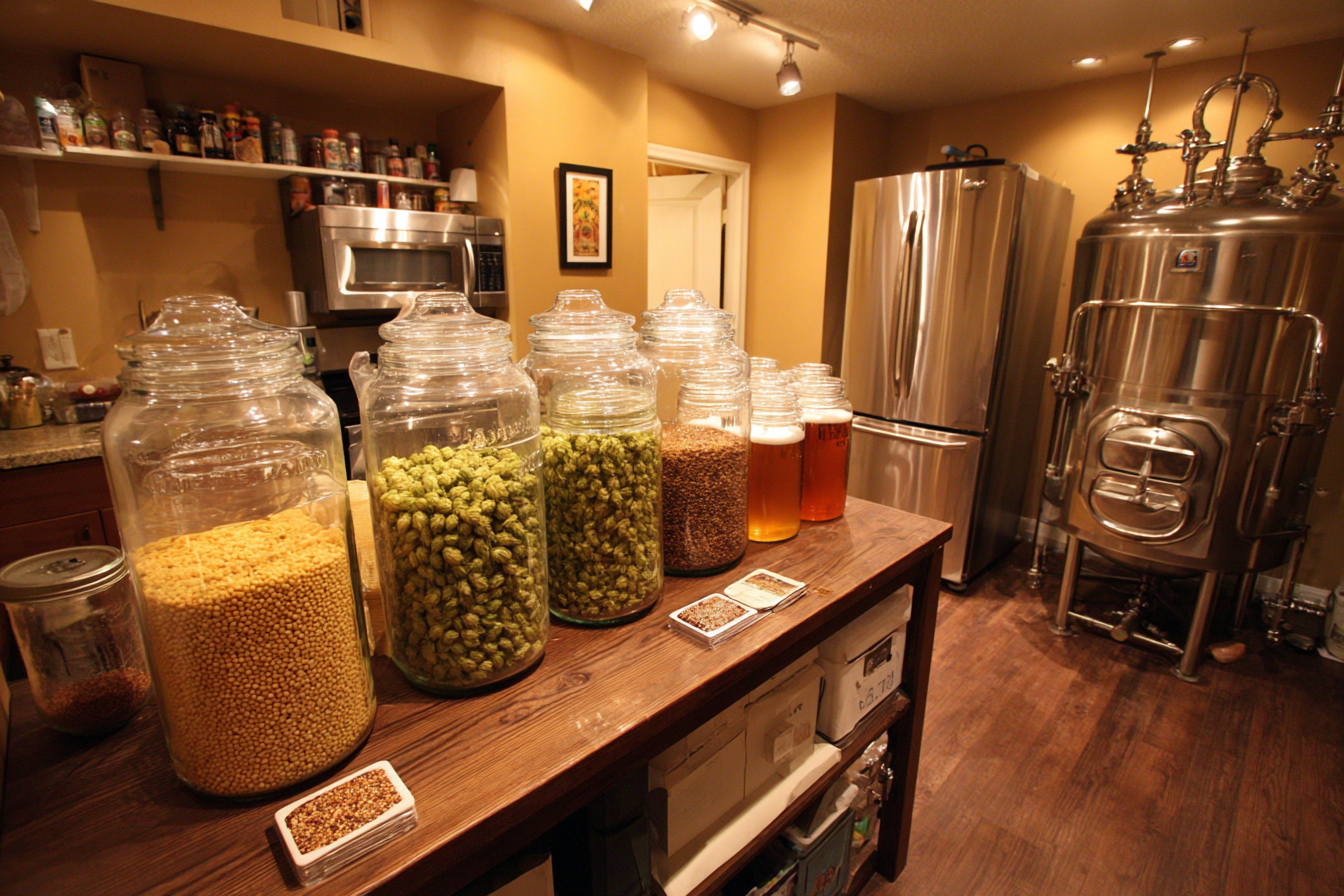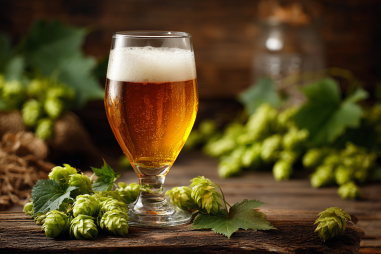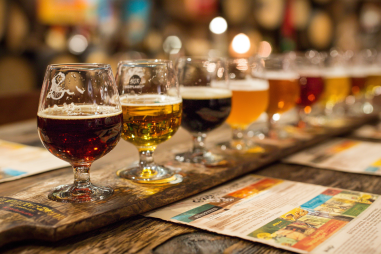Brewing an American Blond Ale at home is a rewarding experience for both novice and seasoned homebrewers. This beer style is known for its approachable, smooth, and refreshing qualities, featuring a light malt character balanced by gentle hop bitterness. Whether you’re aiming to recreate a classic recipe or experiment with your own twist, understanding the brewing process is key to crafting a prize-worthy ale. In this guide, we’ll walk through every essential step — from selecting ingredients to bottling — to help you brew a delightful American Blond Ale right in your own kitchen.
Essential Ingredients: Malt, Hops, Yeast, and Water
The foundation of any successful brew is the careful selection of ingredients, and American Blond Ales are no exception. Their clean, crisp profile relies on a balanced and straightforward ingredient list that emphasizes malt sweetness and subtle hop character.
Malt
The malt bill for an American Blond Ale typically leans heavily on pale malts such as 2-row barley, which provides a clean, light malt backbone. Some brewers add small amounts of specialty malts like CaraPils or Victory to enhance body and add a touch of biscuity flavor. It’s important to avoid overly dark malts if you want to retain the signature light color and crisp flavor.
Hops
Hop selection in blond ales should complement rather than dominate. American varieties like Cascade, Willamette, or Amarillo are common choices because they impart mild floral, citrus, and earthy notes that balance sweetness without overwhelming bitterness. Aim for a moderate bitterness level around 15-25 IBU (International Bitterness Units).
Yeast
A clean-fermenting yeast strain is critical for the smooth flavor profile of blond ales. American Ale yeast strains, such as Wyeast 1056 or Safale US-05, are popular as they allow malt and hop characteristics to shine without adding fruity esters or phenolics.
Water
Water quality can make or break your brew. Using clean, neutral-tasting water is ideal. Most municipal water supplies are suitable, but avoid water high in chloramine or chlorine unless treated with activated carbon filters. The mineral content should be balanced with moderate sulfate levels to enhance hop bitterness slightly without drying out the beer.
Mash and Boil Procedures Specific to Blond Ales
The mash and boil stages are crucial steps where raw ingredients start transforming into beer. For American Blond Ales, these procedures emphasize crispness, clarity, and balanced flavors.
Mash Process
Begin by heating your mash water to around 165°F (74°C), then mixing in the crushed grains to achieve a stable mash temperature of approximately 152°F (67°C). Maintain this temperature for 60 minutes to allow enzymes to convert starches into fermentable sugars, which contributes to a light-bodied finish. Some brewers do a mash-out step by raising the temperature to 168°F (76°C) to stop enzyme activity and improve wort separation.
Boil Process
Once the mash is complete, drain the sweet wort and bring it to a vigorous boil for 60 minutes. This stage is vital for sterilizing the wort, concentrating flavors, and adding hops. Add your bittering hops at the start of the boil, and any aroma hops during the final 5-10 minutes for more delicate flavor contributions. A quick whirlpool or hop stand after boiling helps extract subtle hop aromatics without adding bitterness. After boiling, rapidly cool the wort to yeast pitching temperature to minimize contamination and off-flavors.
Fermentation Timeline and Temperature Control
Fermentation is where yeast work their magic, turning sugars into alcohol and carbon dioxide. Maintaining proper temperature and timeframes ensures clean, well-balanced flavors.
Pitch your yeast once the wort has cooled to roughly 65-68°F (18-20°C), ideal for American Ale strains. Ferment within this temperature range for about 1 to 2 weeks. Keeping the fermentation temperature steady is key; fluctuations can cause off-flavors like fusel alcohols or esters. Using a temperature-controlled environment or fermentation chamber can greatly improve your final product’s quality.
After primary fermentation slows down, consider a cold crash — lowering temperatures to near 35°F (2°C) for 24 to 48 hours. This helps clarify the beer by encouraging yeast and particulates to settle, bringing out the clean appearance and taste typical of blond ales.
Tips for Achieving the Signature Light Color and Flavor
The American Blond Ale’s hallmark is its clear, pale yellow hue and crisp yet slightly sweet flavor. Here are several tips to help you hit that iconic profile:
- Use light pale malts and avoid roasted grains that darken the beer.
- Keep mash temperatures on the lower end (around 150-152°F) for more fermentable sugars and a drier finish.
- Select clean fermenting yeast strains that don’t add unnecessary esters or phenols.
- Manage hop additions carefully to balance bitterness without overwhelming the malt sweetness.
- Cold crash your beer to improve clarity and reduce haze.
- Minimize oxygen exposure after boiling to avoid oxidation, which can dull flavors and color.
Common Mistakes to Avoid
Even experienced homebrewers can slip up, so watch out for these pitfalls when brewing your American Blond Ale:
- Overly dark malts: Adding too many specialty or roasted malts can muddy the bright appearance and flavor.
- Inconsistent fermentation temperatures: Too warm results in off-flavors; too cold can cause stalled fermentation.
- Poor sanitation: Any contamination can ruin the clean profile of this style.
- Ignoring hop timing: Adding too many late hops affects aroma, while early hop additions impact bitterness — balance is key.
- Rushing fermentation or bottling: Bottling before fermentation completes can lead to off-gassing or bottle bombs.
Bottling and Carbonation Techniques
Once fermentation completes and your beer has cleared, it’s time to prepare for bottling. Sanitize all bottles and equipment thoroughly to prevent contamination.
Add priming sugar — typically corn sugar — to the beer to provide fermentable sugars for carbonation inside the bottle. The recommended amount for American Blond Ale is generally around 2.5 volumes of CO2, achievable with about 3/4 cup of priming sugar per 5 gallons, but always measure carefully and adjust to taste.
Fill bottles leaving about an inch of headspace, cap them securely, and store at room temperature for 1-2 weeks to allow carbonation. After this, refrigerate the bottles for at least 24 hours before tasting to let the beer settle and the flavors meld.
Tasting and Evaluating Your Homebrew
The moment of truth arrives when you pop open your first bottle of homebrewed American Blond Ale. Pour gently into a clean glass, aiming for about a 2-inch head of foam.
Look for a bright pale gold color with good clarity, and a light white head that lingers moderately. Inhale to detect subtle floral or citrus hop aromas combined with soft malt sweetness.
On the palate, expect a smooth mouthfeel with moderate carbonation, balanced bitterness, and a finishing dryness. Try to identify if any off-flavors like sulfur, diacetyl (buttery), or oxidized notes are present. If your beer tastes too sweet or heavy, consider tweaking your mash temp or yeast strain next time.
Taking notes on aroma, flavor, mouthfeel, and appearance helps refine your brewing skills. Sharing your brew with friends and getting feedback can also be invaluable as you perfect your recipe.
Brewing an American Blond Ale is a fantastic project that rewards patience and attention to detail but isn’t overly complex. By following these guidelines and embracing every step of the brewing process, you’ll create a crisp, refreshing ale that embodies the best of this classic American style. Above all, enjoy the journey and the delicious results!







